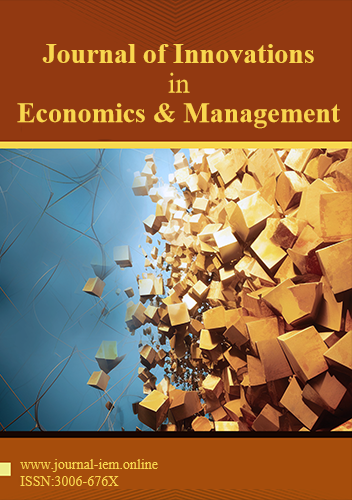 An open access journal
An open access journal
The Future of Sustainable Transportation: Electric Vehicles, Smart Mobility, and Urban Planning
Abstract
This paper explores the future of sustainable transportation in the context of evolving technologies, environmental concerns, and urban planning. As the world grapples with the challenges of climate change and urbanization, the need for sustainable and efficient transportation systems has never been more critical.
The research begins by highlighting the environmental and societal impacts of conventional transportation, including pollution, congestion, and energy consumption. It underscores the imperative to transition to sustainable alternatives.
One central theme of the study is the examination of electric vehicles (EVs) and their role in sustainable transportation. It explores the advancements in EV technology, charging infrastructure, and the potential for widespread adoption. It also assesses the environmental benefits of EVs and their contribution to reducing greenhouse gas emissions.
Furthermore, the study investigates the concept of smart mobility and its integration into urban planning. It analyzes how data-driven solutions, ride-sharing platforms, and autonomous vehicles are shaping the future of transportation. It discusses the role of urban design in promoting walkability, cycling, and public transit.
A significant aspect of the research is the discussion of policy frameworks and incentives for sustainable transportation. It addresses government initiatives, regulations, and financial incentives that promote the adoption of EVs and the development of eco-friendly transportation systems.
Through an analysis of case studies and industry trends, the paper identifies successful models of sustainable transportation initiatives. It highlights best practices and lessons learned from cities and regions that have embraced sustainable mobility solutions.
Additionally, the study emphasizes the importance of public awareness and education in fostering a culture of sustainable transportation. It discusses the role of public-private partnerships in advancing sustainable mobility initiatives.
In conclusion, this paper contends that the future of sustainable transportation lies in a combination of electric vehicles, smart mobility solutions, and urban planning that prioritizes environmental stewardship and the well-being of communities.
Share and Cite
Article Metrics
References
- Sperling, D., & Gordon, D. (2009). Two billion cars: Driving toward sustainability. Oxford University Press.
- International Energy Agency (IEA). (2020). Global EV Outlook 2020: Enter the decade of electric drive? IEA.
- Shaheen, S., Cohen, A., & Zohdy, I. (2016). Shared micromobility: Current practices and guiding principles. Research in Transportation Business & Management, 18, 100-110.
- Litman, T. (2020). Evaluating Transportation Equity. Victoria Transport Policy Institute.
- Levinson, H. S., & Krizek, K. J. (2018). Planning for place and Plexus: Metropolitan land use and transport. Routledge.
- Newman, P., & Kenworthy, J. (2015). The End of Automobile Dependence: How Cities Are Moving Beyond Car-Based Planning. Island Press.
- Guerra, E., Cervero, R., & Tischler, D. (2012). The half-mile circle: Does it best represent transit station catchments? Transportation Research Record, 2276(1), 101-109.
- International Transport Forum (ITF). (2019). ITF Transport Outlook 2019. OECD Publishing.
- Litman, T. (2019). Reflections on 50 Years of Urban Transport Planning. Victoria Transport Policy Institute.
- Shaheen, S., Cohen, A., & Martin, E. (2019). Mobility and the Sharing Economy: Impacts on Transportation Planning. Elsevier.

